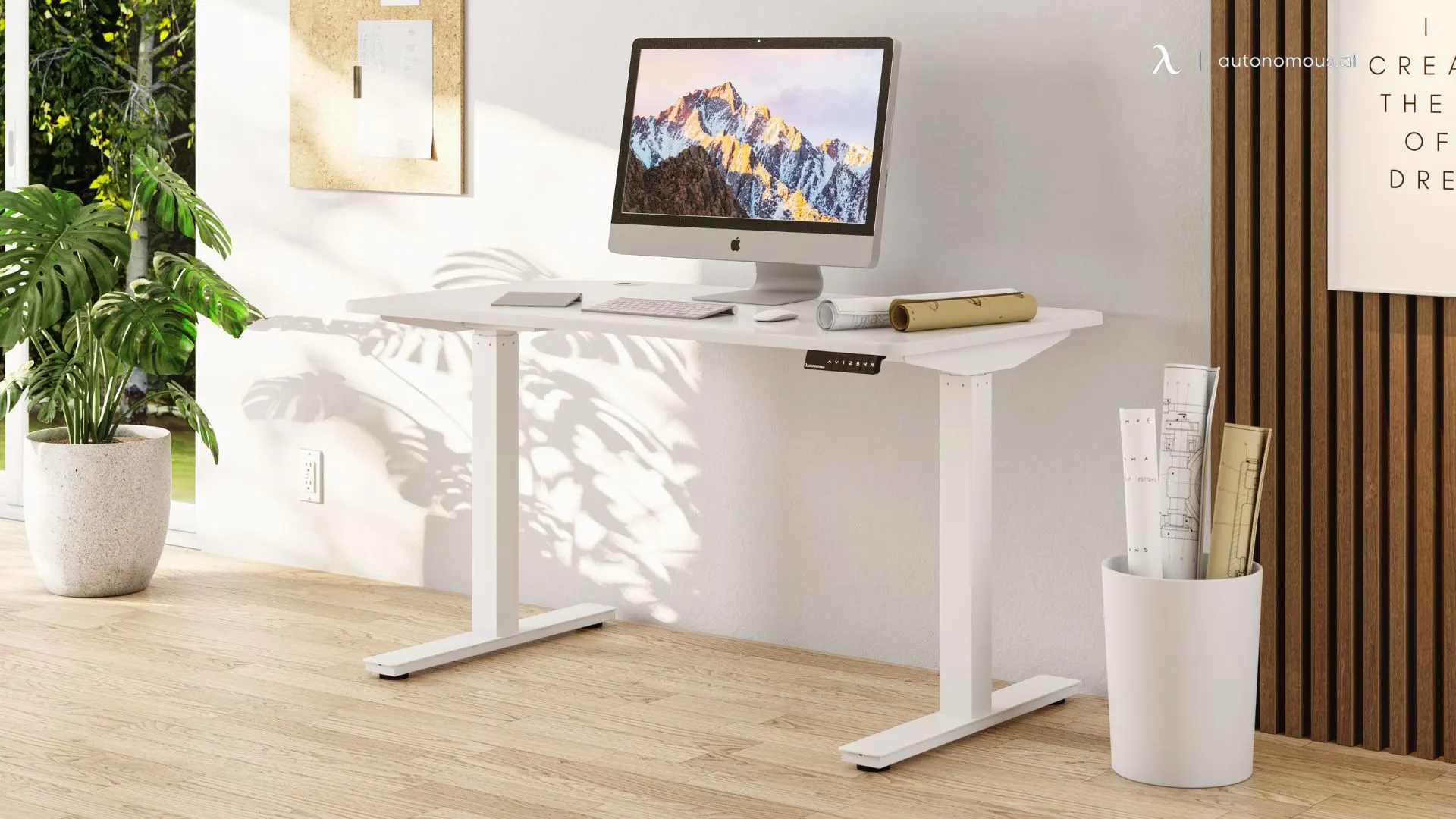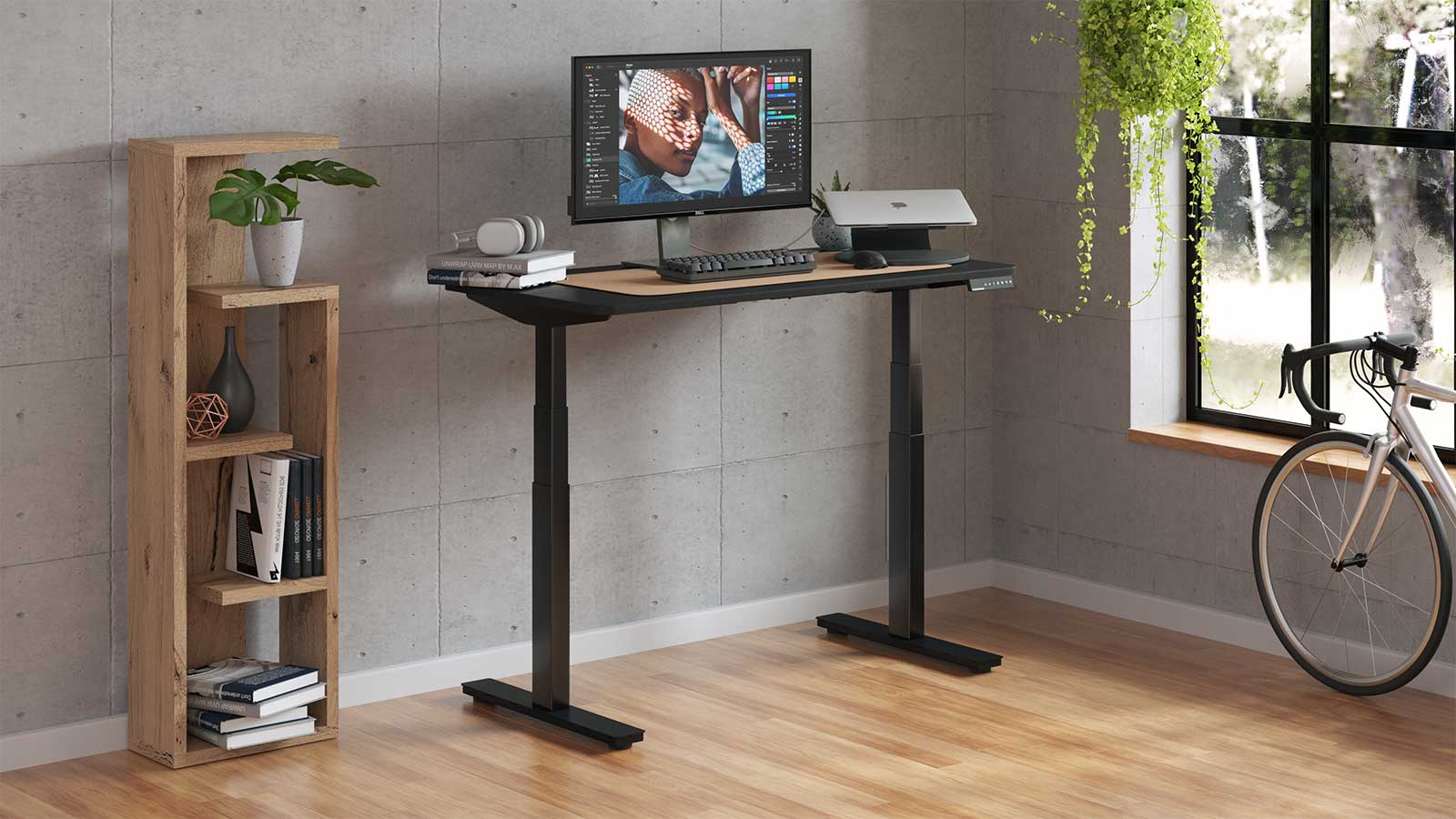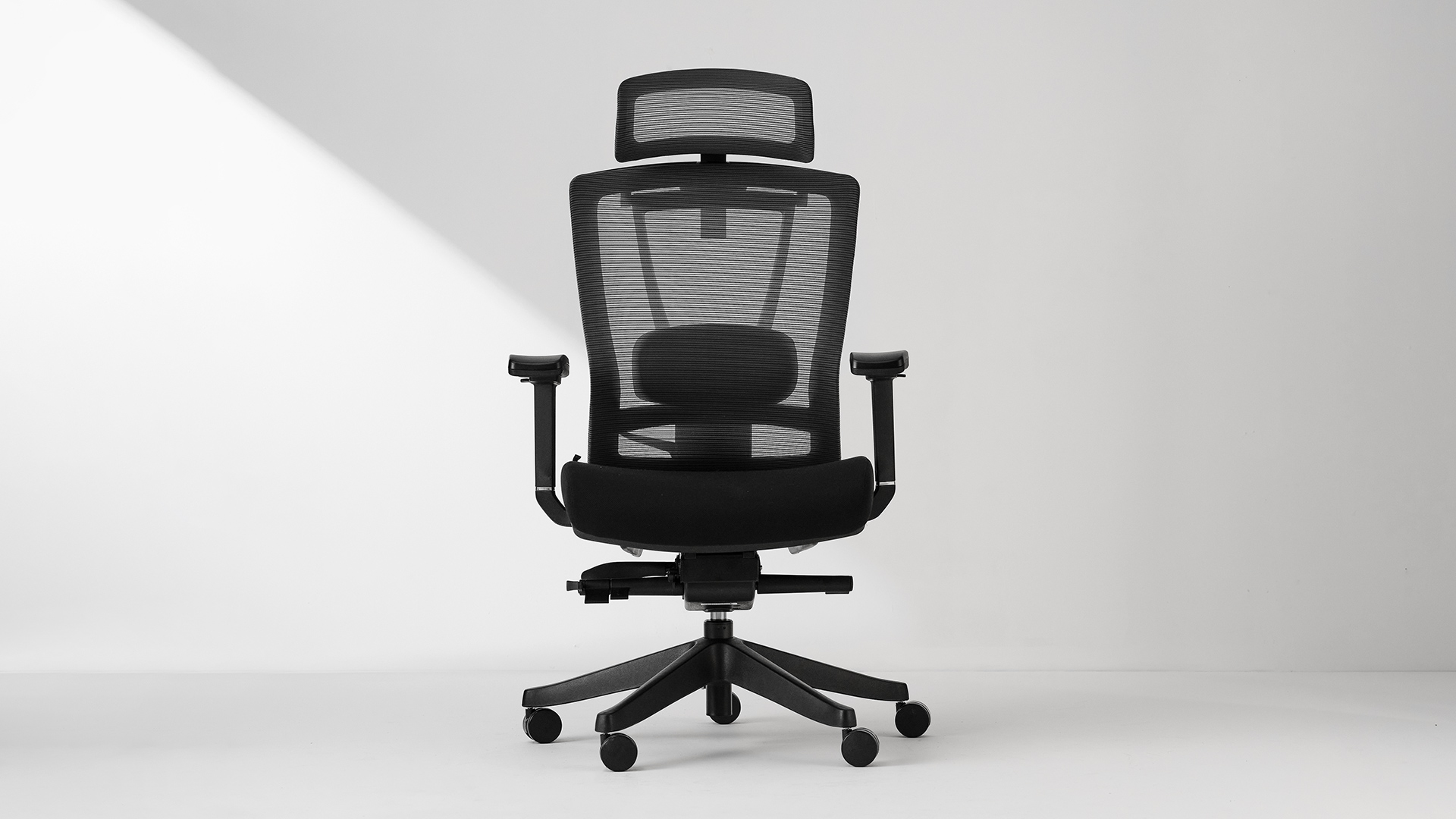
Good Office Habits to Relieve and Prevent Neck Stiffness & Pain
Table of Contents
- What Bad Office Habits Contribute to Upper Back and Neck Stiffness and Pain?
- Other Common Causes of Neck Stiffness & Pain
- Invest in High-Quality Ergonomic Office Equipment for Neck Stiffness Relief
- Introduce Exercise into Your Workday
- Take Regular Brain Breaks
- Final Thoughts on How to Help Neck Stiffness and Pain in the Office
Neck stiffness and pain plague many office workers. Sitting at a desk for long hours wreaks all kinds of havoc on the body- especially if you are guilty of bad work habits that put added strain on your muscles.
It’s not all bad news, though. There are ways to reduce and relieve neck stiffness in the office with small, manageable changes that you might find make a noticeable difference in your productivity and overall enjoyment at work.
Here is your complete guide to office-related neck stiffness, what causes it, and what you can do to make it a thing of the past.
What Bad Office Habits Contribute to Upper Back and Neck Stiffness and Pain?
Before we talk about the good habits you can introduce to relieve neck stiffness, let’s talk about what could be causing it.
The upper back and neck are two parts of the body that suffer the most when people spend a long time sitting down- especially if they are focused on a screen (let’s face it- most of us are nowadays!). In fact, no other occupation has as high a rate of back and neck pain as office workers.
A lot of it comes down to the way people sit and for how long they stay in one position. Here are some of the bad office habits that cause pain, stiffness, and discomfort in the neck and upper back.
- Hunching forward in your desk chair
- Not having a chair that is the right height or angle
- Sitting too close or too far away from the screen
- Staying sitting for long stretches without moving
- Having your screen at the wrong level for your eyes
- Slumping and forgetting about proper sitting posture
- Straining neck muscles
- Working under excess stress or psychological strain
Other Common Causes of Neck Stiffness & Pain
Other factors that contribute to neck and upper back pain in office workers include:
- Age: It is most common in people aged between 25 and 50.
- Gender: Women are more prone to upper back and neck stiffness.
- Exercise habits: People who exercise regularly are less likely to get a sore or stiff neck at work.
How to relieve neck stiffness in the office? These bad habits are things so many of us do without even thinking about it, and even if you know you shouldn’t, force of habit, muscle memory, and the wrong setup always drive you back to the same things.
To change that, we need to replace them with good work habits that help to prevent and relieve neck stiffness and pain. Some are changes we can make to the physical setup of how we work and others we must implement daily through actions and conscious choices.
Invest in High-Quality Ergonomic Office Equipment for Neck Stiffness Relief
One of the things that has the most significant impact on the pain, stiffness, and discomfort office workers feel in various parts of their body is the working setup. Your desk, chair, screen, and desk accessories play a vital role in keeping your body supported and comfortable.
Many people put very little thought into how their office setup affects them physically- either because they just go along with what they were given in their workplace, or because they have designed their home or private office to look great without ergonomics in mind.
The first thing you should do if suffering from neck stiffness or pain is check if you have the right equipment. Here are a few crucial things to check.
- Are your feet flat on the ground with your hips and knees at a 90-degree angle?
- Are your arms parallel to the floor when resting flat on your desk?
- Is the top third of your computer screen at eye level when you look straight ahead?
- Does the natural curve of your spine feel supported?
- Are your shoulders and ears in line with your hips?
These are just a few proper posture tips for sitting at a desk. If you find you answered no to many of these or notice other things about the way you sit that don’t feel right, it could be time to invest in better equipment.
Of all the possibilities, the two best investments for improving neck stiffness and pain are sit/stand desks and ergonomic desk chairs.
Standing Desks and Neck Pain
An automatic standing desk is one of the best modern additions to the office setup. It allows you to pick from several heights- including fully standing.
This is beneficial in more than one way. First, if you are particularly short or tall, you can adjust the sitting height to suit your needs. Secondly, having the standing function encourages you to spend less time sitting and moving more.
Standing desks make your working life more flexible, convenient, and healthy- and they can really make a difference if you are experiencing back or neck pain. Stand, stretch, and walk on an under-desk treadmill without interrupting your workflow.
The Autonomous Desk 2 (Standard) is one of the best models today. It is sleek, simple, and professional, with smooth controls and motion. Adjust the height from 29.4 inches to 48 inches to adapt to your working style.
If you need a wider height range, the Autonomous Desk 2 is a fantastic choice. Ranging from 26.2 inches to 52 inches, it really is the smart desk for everyone.
With one of these impressive machines at the center of your office setup, you can feel motivated to make more positive changes to improve your health and posture at work.
Ergonomic Chairs and Neck Pain
Even more important than an adjustable standing desk is a high-quality ergonomic chair. Above all else, having a desk chair that does not properly support your back and promote good posture directly causes neck pain, back pain, and more.
It is not just a case of having a chair with comfy cushioning that looks good- a chair should mold to your spine and keep your hips, back, and shoulders aligned. Even after extended hours of sitting, you should still feel comfortable and not be stiff or sore.
There are many varieties of ergonomic chairs out there, with a lot of different price tags. A decent chair can cost anything between $200 and $2,000, depending on the brand, materials, and features. The good news is that you don’t need to spend a fortune to get a chair that will make a difference to your neck pain.
Here are some of the key features you should look for when picking an office chair to help relieve neck stiffness, pain, and discomfort.
- Adjustable height and seat depth
- Armrests with adjustable heights and angles
- Supportive backrest (preferably high-back if you struggle with neck pain)
- Built-in lumbar support
- Flexible and breathable backrest material
- Adjustable tilt and recline settings
- Comfortable and breathable chair cushioning
Some people prefer a chair with a headrest- others do not. It can be beneficial for people who sit for a long time, especially if they are prone to neck stiffness. Other things to check are the weight restrictions and warranty.
If you want the best of ergonomic chair design without busting the bank, Autonomous has got you covered.
The range of ergonomic chairs on offer covers everything you could want or need for your work setup- each one specifically designed for lasting comfort and posture support.
ErgoChair Pro
Our top recommendation for those looking to combat neck pain and stiffness is the ErgoChair Pro. Every inch of this chair was designed with the human body in mind. From head to toe, you are supported with adjustable, breathable, and durable features and materials that feel like they were made for you.
It has a high back and adjustable-height headrest that prevents you from straining your neck and trains you to keep your posture aligned. The rounded edges, tilt settings, and spine support help to improve blood flow, engage your core, and stop you from slumping. This chair offers incredible value for money. It has all the style and substance of top-tier premium chairs without the price tag.
It has many of the same excellent ergonomic features as the ErgoChair Pro but with the addition of leg rests and an extended recline range. You can adjust the lumbar and neck fittings to fit your body perfectly and kick back up to 18 degrees of recline without losing any of that vital support.
Introduce Exercise into Your Workday
Once you have the right setup, the next step is to introduce changes to your workday routine. The longer you stay in one position, the stiffer you are likely to become. The less you work your muscles, the easier they tire and become sore.
Even if exercise is not your favorite thing to do, there are simple ways to improve the strength, control, and flexibility of the muscles in your upper body and neck that get stiff and painful.
Here are a few simple and healthy exercise habits you can easily implement into your routine to help prevent and relieve pain and stiffness in your neck and upper back.
Active Sitting Techniques
Active sitting is the practice of engaging your muscles in one way or another while seated- usually at a desk while working.
While there are more effective ways to exercise, you can’t always get around the fact that many work tasks require you to be at a desk, and standing up all day long is just not practical (or recommended).
There are two ways to introduce active sitting. You can sometimes replace your usual ergonomic office chair with a balance ball, kneel chair, or other setup that forces you to engage your muscles if you don’t want to end up on the floor. Alternatively, you can practice basic stretches and movements in your normal chair.
Seated stretches keep your muscles warm and loose, rather than tense and stiff. Consider setting alarms to remind you to periodically stretch your back, arms, neck, hips, and shoulders to avoid pain setting in.
You can also try out some seated exercises such as knee lifts, butt crunches, and moving your feet in circular motions.
Under-Desk Exercise Equipment
Take it to the next level with office exercise equipment that fits under your standing desk to let you work and work out at the same time. This is a particularly great option for home offices or those who have a private office since you can enjoy privacy to exercise and still get work done.
Walking and Moving
Another reason standing desks are so beneficial is how easy they make it to move around while working. Walking and stretching are the best ways to loosen up your body and avoid stiffness, and it is important you make this part of your routine.
Step away from the desk when you can- even to walk around the office a couple of times or stretch out where you have space. Whenever you are waiting for something (printing, downloading, whatever), use that time to stand and walk. If you can’t go far from the desk, just get up and rock back and forth a little while stretching out your back and neck.
Take Regular Brain Breaks
All the healthy office habits we mentioned so far are physical, but your mental well-being also impacts strain, pain, and stiffness in your neck and back.
Stress has a significant effect on the body, and overworking yourself can lead to chronic pain in your back and neck. Remember to look after yourself mentally while working and take regular, short breaks to destress and reset.
Make yourself a coffee, go for a quick breath of fresh air, or do some light meditation or stretching without looking at a screen or thinking about work.
Final Thoughts on How to Help Neck Stiffness and Pain in the Office
Neck stiffness and pain are common complaints from office workers who spend a lot of time sitting down. Changing your desk setup and adding routine movement and screen breaks into your day can help reduce and prevent further problems.
Invest your money in the right desk and chair, and invest your time in healthy office habits that keep your body feeling great.
.svg)











